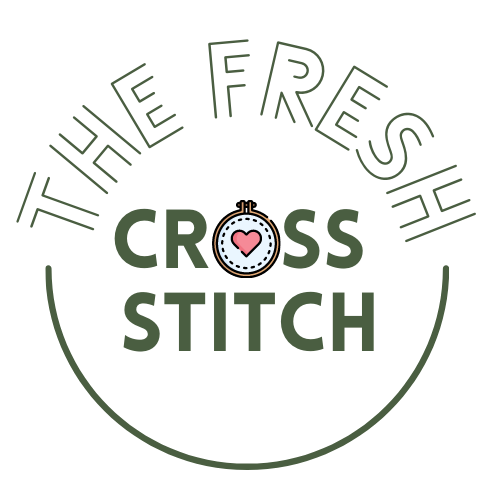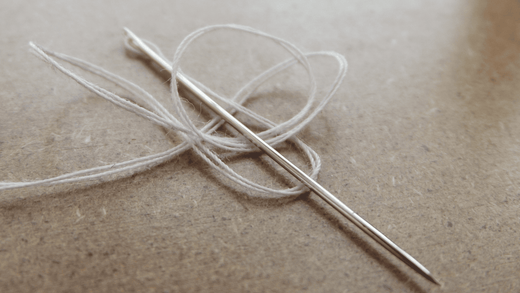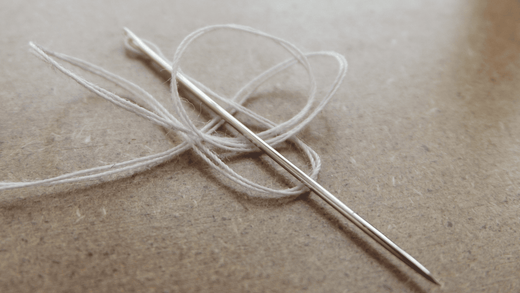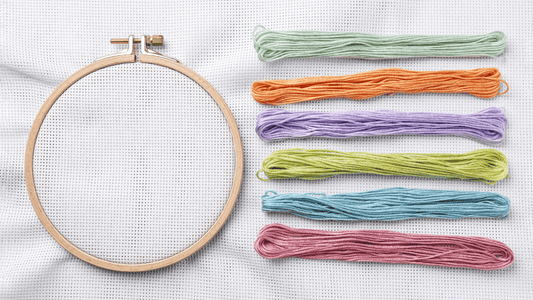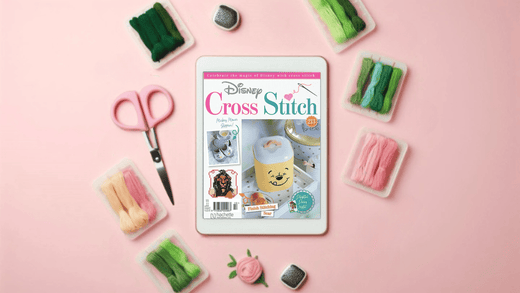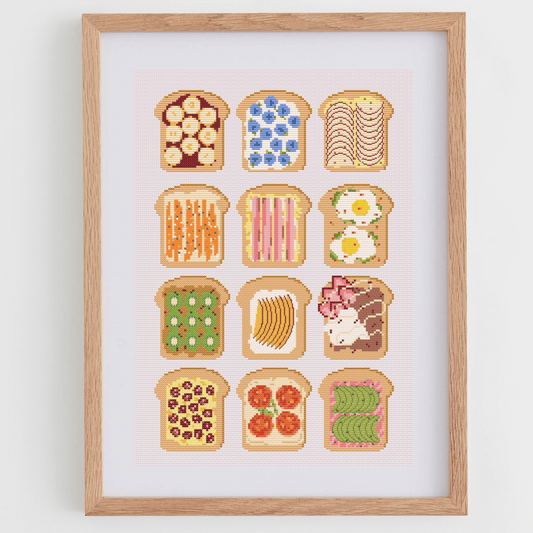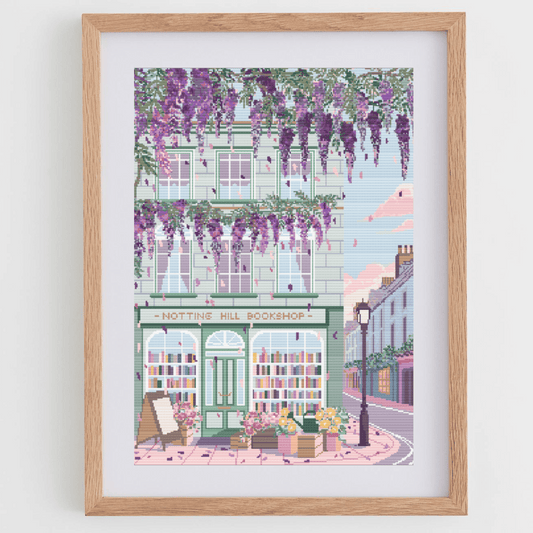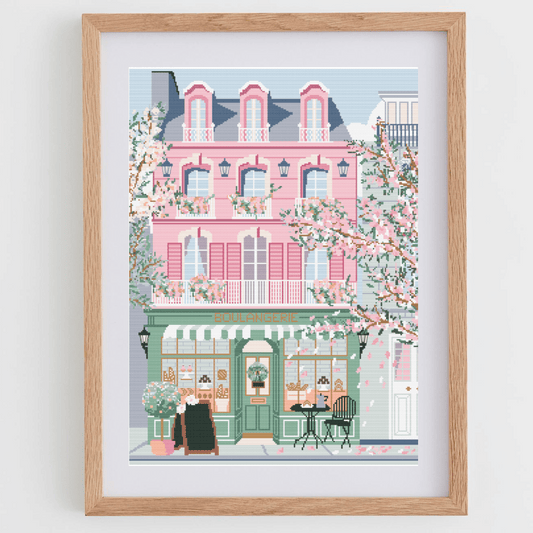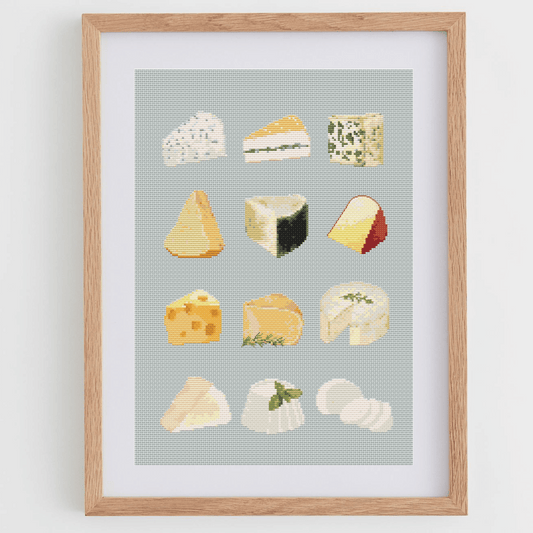Choosing the right needle is crucial for any needlecraft project. Considering cross stitch and embroidery need only three basic tools, it’s better to choose those tools wisely. From the size and shape to the material and type, each aspect of a needle contributes to its functionality and suitability for your cross-stitch and embroidery projects.
In this article I will provide an in-depth needle guide, focusing on those used for cross stitch and embroidery, and will help you understand their features and applications. Whether you're working on a simple pattern or an elaborate design, understanding your needle options will enhance your crafting experience and results.
Basic concepts about needles
Understanding the basics of needles is the first step in selecting the right one for your project. Needles come in various shapes, sizes, and materials, each designed for specific tasks.
The main components of a needle are the point, the shaft, and the eye:
- The point or tip is the end of the needle that pierces the fabric.
- The shaft is the body of the needle.
- The eye is the hole through which the thread passes.
If you’re looking for a needle for cross stitch and embroidery, this is
- A rounded point: The point of the needle needs to be rounded rather than pointy. This way, it will be easier to slide it through the holes of your fabric and you will avoid it from snagging on the fabric.
- A shaft that corresponds to your aida count:Needles come in different size (which will be explained in a bit), and there are some basic rules of thumb for choosing a needle size that goes well with your fabric.
- A bigger eye: Cross-stitch and embroidery floss is thicker than sewing floss, so you will need a needle with a bigger eye. Will it be impossible to get the thread through a small-eyed needle? No, but if you don’t want to lose your mind, I recommend just buying a proper one and skipping this part.
Needle size guide: Understanding their codes and their relation with aida counts
Needles are sized by numbers. For instance, it is likely that you have seen cross-stitch needles with codes that vary from 18 to 26, among others. In this case, cross-stitch and embroidery needles that have smaller numbers indicate larger needles. For example, a size 18 needle is larger than a size 28 needle.
The larger the aida count, the larger the needle size.
Cross-stitch and embroidery needle size chart
The size of the needle on the fabric and its count. As a general rule, the lower the fabric count, the lower the needle size.
| Aida count | Needle size |
| 6 count | Size 18 |
| 8 count | Size 20 |
| 11 count | Size 22 |
| 14 count | Size 24 |
| 16 count | Size 26 |
| 18 count | Size 28 |
Remember you can check the different types of cross-stitch aida and their counts in my blog.
Types of needles according to their purpose
Cross-stitch needles
Cross-stitch needles, also known as tapestry needles, have a blunt tip and a large eye. The blunt tip prevents the needle from splitting the fibers of the fabric, which is typically Aida cloth or linen. The large eye accommodates multiple strands of embroidery floss. Common sizes for cross-stitch needles range from 22 to 28, with size 24 and 26 being the most popular.
Embroidery needles
Embroidery needles, often referred to as crewel needles, have a sharp tip and a medium-sized eye. The sharp tip allows for precision and ease when working with tightly woven fabrics. These needles come in a wide range of sizes, typically from 1 to 10, with size 7 and 8 being popular for general embroidery work. The medium-sized eye can accommodate embroidery floss, pearl cotton, and other specialty threads.
Sewing needles
Sewing needles, also known as sharps, have a sharp tip and a small, round eye. They are designed for general hand sewing tasks and come in various sizes to suit different fabrics and threads. Sizes range from 1 to 12, with size 7 and 8 being common for everyday sewing. Sharps are versatile and can be used for hemming, mending, and other basic sewing needs.
Types of needles according to their materials
Apart from choosing the right size, you can also base your purchase on the needle material. Once you’re cross stitching, embroidering, or sewing, you will soon notice the importance of your needle being sturdy and durable enough.
Needles can be made from different materials, each offering unique properties:
- Steel needles: The most common type, known for their durability and smooth surface, which allows for easy fabric penetration.
- Gold-plated needles: Offer a smooth stitching experience and are less likely to cause allergic reactions. They are also resistant to tarnishing.
- Nickel-plated needles: Durable and resistant to corrosion, making them a good choice for frequent use.
- Plastic or bamboo needles: Lightweight and gentle on the hands, suitable for children or those with arthritis.
What are the best needles for cross stitch and embroidery?
The best needles for cross stitch and embroidery depend on your specific project and personal preferences. For cross-stitch, tapestry needles (size 24 or 26) are ideal due to their blunt tip and large eye. For embroidery, crewel needles (size 7 or 8) are excellent choices for their sharp tip and medium eye, which allow for precise stitching with a variety of threads.
DMC gold tapestry needles
DMC is a leading brand when it comes to cross-stitch and embroidery thread, but also when it comes to needles and other supplies for these arts. Their needles present high quality and you will find a vast variety of sizes and materials. These gold needles come in different sizes and they are a top recommendation for cross stitch and embroidery.
One last piece of advice: Use a needle minder!
Needles will last forever, if you don’t lose them. This is their only con — being so small, it is likely that you lose them, rather than them breaking (something I have never witnessed).
Having a needle minder will help you keep them in sight. This simple tool is just a magnet where you can place the needle, and it will stay in place. Being an economic tool, I recommend buying one in order to keep all your needles in place. And also they are super cute!
